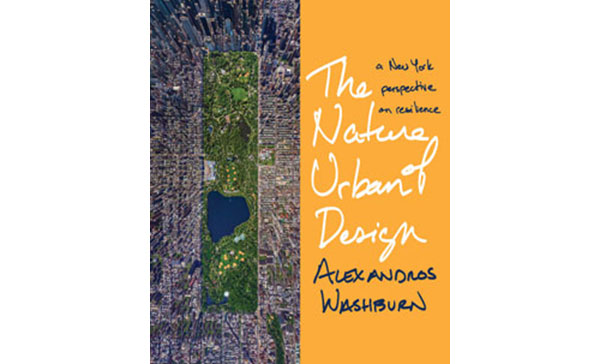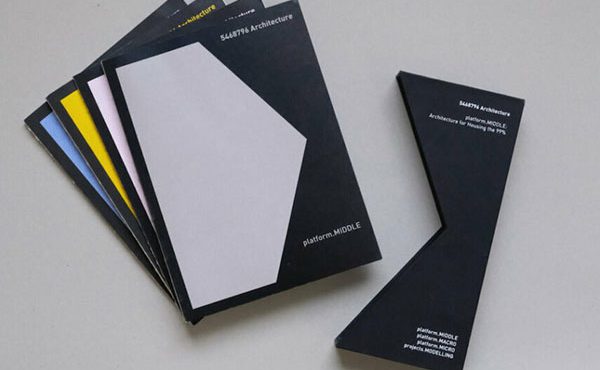
Author: Alexandros Washburn (Island Press)
On the whole, recent books about urban design tend to reinforce many of the same sentiments and perspectives. Although this has several strengths and potentially bodes well for our future communities, books that break from this pattern in a meaningful way are refreshing and powerful. Such is the case with The Nature of Urban Design: A New York Perspective on Resilience — a book written by someone who is living within their own case-study.
Author and former chief urban designer of the New York City Department of City Planning, Alexandros Washburn, lives in Red Hook, Brooklyn which was hit hard by Hurricane Sandy. As the storm made ground, Washburn chose to stay in his home, and disobey the order to evacuate, on the grounds that he wanted to see how the city would handle the event.
It is from this starting point that the book launches through thousands of fascinating anecdotes, that tell a story — or series of stories — about designing an urban setting. Moving from designing in the face of climate change, to policies and development hurdles within the mayoral office of New York City, as well as discussing how the world is dealing with their own design issues and intriguing adaptation-based designs in other countries, Washburn speaks to a number of complex subjects pertaining to adaptation, resilience and climate change mitigation.
The book is adorned with beautiful photography and the occasional sketch, which lend to a casual read, even when the context of the book is anything but. After the preface and introduction, the book is broken into five chapters and an epilogue. Chapter one asks the question, Why Should We Care About Cities?, a question that is being posed and answered by many right now in the face of suburban sprawl and greenhouse gas emissions, to mention just two.
Following this is The Process of Urban Design, and The Products of Urban Design which both speak equally to how the urban design is performed, how problems are discovered and handled, and how, in the end, changes are physically implemented.
He then moves in to a wonderful case-study on The Process and Products of the High Line. If you are unfamiliar with New York City’s High Line project, it was a large undertaking by the city of New York and private investors, who wanted to see a derelict set of elevated rail tracks transformed into a public amenity instead of being torn down. The result, as discussed within the book, is a beautiful, well-used linear park surrounded by a number of new developments, all of which have done wonders for the city in several ways.
After this section, he wraps everything up by talking about adaptation and mitigation in the face of climate change in a chapter titled Urban Design for Greater Resilience. Within, he shows a fun sketch of how he has already converted the bottom floor of his apartment to be winched up in case of flood, raising all of his goods and valuables above the water to prevent damage. It is another example of the quirkiness that embodies this book.
While the book is essentially about urban design, it is also a key book in understanding the effects of climate change and the steps cities will need to take toward adaptation and mitigation. There are two quotes within the book that stood out to me, the first being that “building design can aid mitigation by making density more attractive.”
Although much research has been done documenting how we are innately a nomadic species preferring exploration and roaming, we also seem to be an urban species and the importance of urbanization (done right) is becoming more significant in light of climate change mitigation. Related to this is the significance of good design — from the products used to interior spaces, building design to the organization of neighbourhoods and regions — design matters, especially as it relates to making urban cores accessible and attractive by the public, at large.
The second quote that related to the first intimately is that “the problem of climate change may be global, but the adaptation response is always local.” Washburn argues that while climate change mitigation is obviously our end goal, we have to be ready to adapt now in preparation for the time between change. Band-aid solutions will be the first order of things, but these, Washburn argues, will necessarily begin the hard road to proper mitigation, and (hopefully) preventing these types of catastrophes from happening to our cities.
Simply put, The Nature of Urban Design reads like an engaging story, through the eyes of a well-informed urban planner, who wants nothing more than to see good done in the world. Washburn has a magnificent quote at the beginning of the book, which I am sure will stay with me throughout my professional career and speaks to the integrity of the book and its writer:
Civic virtue is about doing something that will not benefit you–it will benefit a future generation. Civic virtue is about leaving the city better than you found it.
If this was a mantra for even half of our decision makers, we would be well on our way to solving some of our harshest problems.
Urban centers are the lifeblood of our settings. They fuel our economy, they create life and vibrancy, and if done well, they can help mitigate the damage that we are doing to our planet. The Nature of Urban Design: a New York Perspective on Resilience is a journey in it of itself, and Alexandros Washburn should be proud that he broke the rules to complete this fascinating work.
***
For more information on the The Nature of Urban Design: a New York Perspective on Resilience, visit the Island Press website.
**
Jeremy Senko is happily lost in the world of theoretical architecture and design. He is forever a student at heart, consistently reading, experiencing and learning about the world he inhabits. More specifically, he recently completed his Bachelor of Interior Design at Kwantlen Polytechnic University, where he pushed the limits (and the patience) of his professors.



One comment
An impressive share! I have just forwarded this onto a colleague who
was conducting a little homework on this. And he in fact bought me lunch simply
because I stumbled upon it for him… lol. So allow me to reword this….
Thanks for the meal!! But yeah, thanks for spending the time to discuss this issue here on your website.